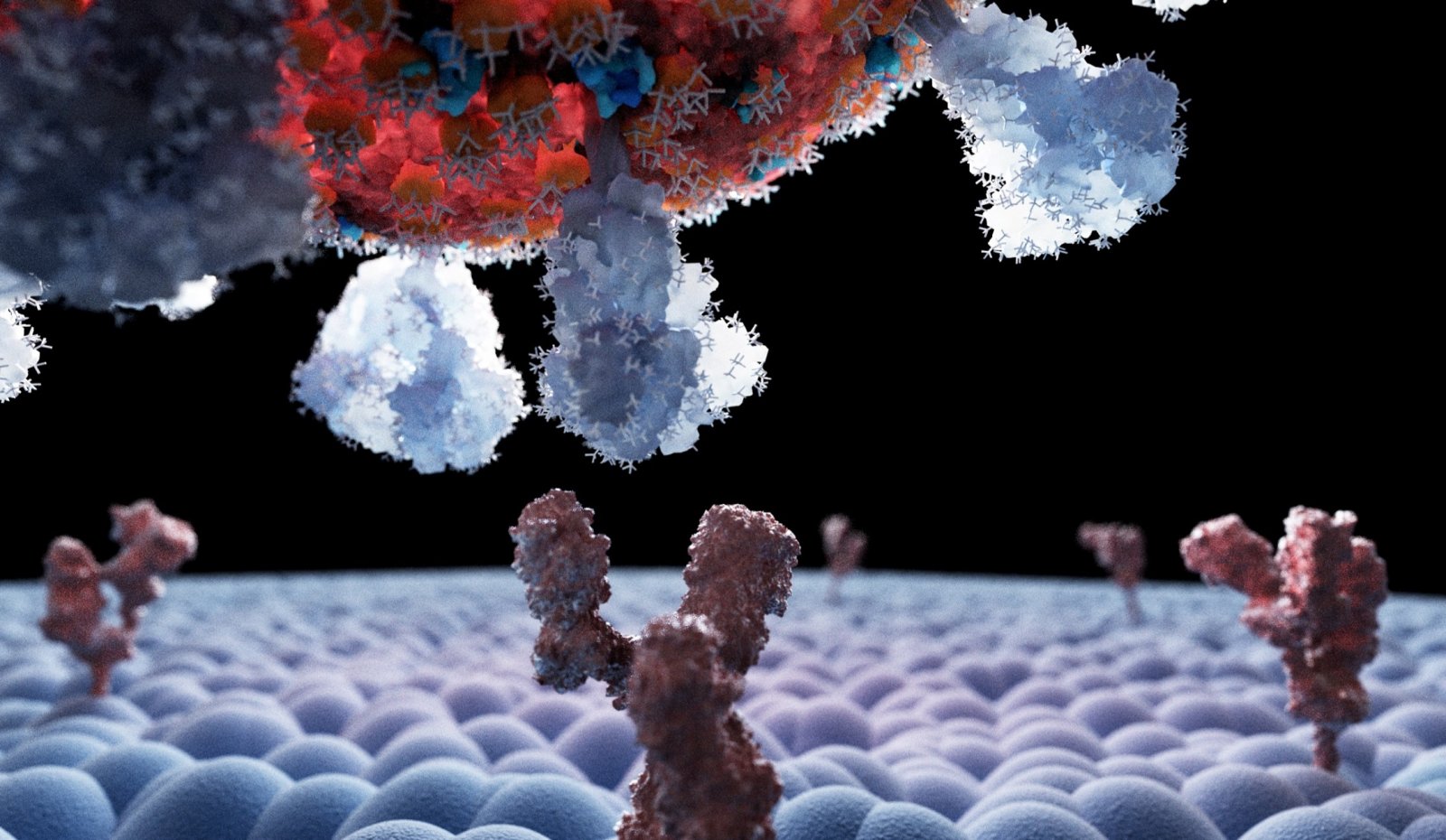Microscopic tug of war with corona
A team of biophysicists found that SARS-CoV-2 can withstand large physical forces, and this might be one of the reasons for its success. In the scientific journal PNAS, the researchers, led by prof. Jan Lipfert, who recently joined Utrecht University, presented their method. It also allows the investigation of drugs designed to prevent the coronavirus from binding.

Breathing, coughing and sneezing
The first, critical step in a coronavirus infection is when the virus attaches to a receptor on the human cell surface with its spike protein. Most corona infections begin in the mouth and throat, where SARS coronaviruses bind to these so-called ACE2 receptor before introducing their genetic material into cells, allowing the infection to run its course.
After initial binding to the receptor, however, the viruses are exposed to numerous forces: breathing, coughing and sneezing generate air currents through the mouth and nose and can dislodge the viruses from potential host cells. From the perspective of the virus, it is essential that their binding to ACE2 can withstand external forces to enable successful infections.
Withstand twice as much force
Jan Lipfert, who was appointed professor in Biophysics at Utrecht University a few months ago, is an expert in ‘force spectroscopy’, a collective term for techniques that can be used to study the behaviour of (bio)molecules under force. In his lab in Munich, Lipfert and his colleagues found that SARS-CoV-2 can withstand twice as much force as SARS-CoV-1, the virus that caused a much smaller pandemic in 2002-2003. "This finding explains why SARS-CoV-2, in contrast to SARS-CoV-1, can also affect the upper respiratory tract, where turbulent air currents generate higher forces than in the deep lungs," says Lipfert.
This difference is thought to have contributed to the very different course that the 2002-2003 pandemic took, compared to the current pandemic. Lipfert: “Infections in the deep lungs with the old SARS-CoV-1 caused patients to become very sick more quickly, but that made it easier to isolate them and thus stop the spread of the virus.”
Force stability might be part of the answer to the question why Omicron is so much more contagious than Delta.
Pull on the spike proteins
Although the binding success of a virus is mostly studied in the light of biochemistry, Lipfert focuses on the role of force stability. “First, we used an atomic force microscope, AFM for short, to pull on the proteins, a method that can apply high forces and perform fast measurements. In parallel, we employed so-called magnetic tweezers, which are extremely sensitive and can resolve very small forces. Using these methods, we imitated the forces in the mouth and throat and analysed which of them are necessary to separate the virus from its binding partner. We were able to cover the entire physiologically relevant force range.”
Currently, the team is using the approach to look at the variants of the corona virus. ”Corona research moves quickly. We are now already studying force stabilities of the more recent variants of SARS-CoV-2. This might turn out to be part of the answer to the question why Omicron is so much more contagious than Delta. And force stability might even lead to help predict future variants of concern.”
Publication in PNAS
Magnus S. Bauer, Sophia Gruber, Adina Hausch, Priscila S.F.C. Gomes, Lukas F. Milles, Thomas Nicolaus, Leonard C. Schendel, Pilar López Navajas, Erik Procko, Daniel Lietha, Marcelo C.R. Melo, Rafael C. Bernardi, Hermann E. Gaub, and Jan Lipfert
A Tethered Ligand Assay to Probe SARS-CoV-2:ACE2 Interactions
Proc. Natl. Acad. Sci. U.S.A (2022)

